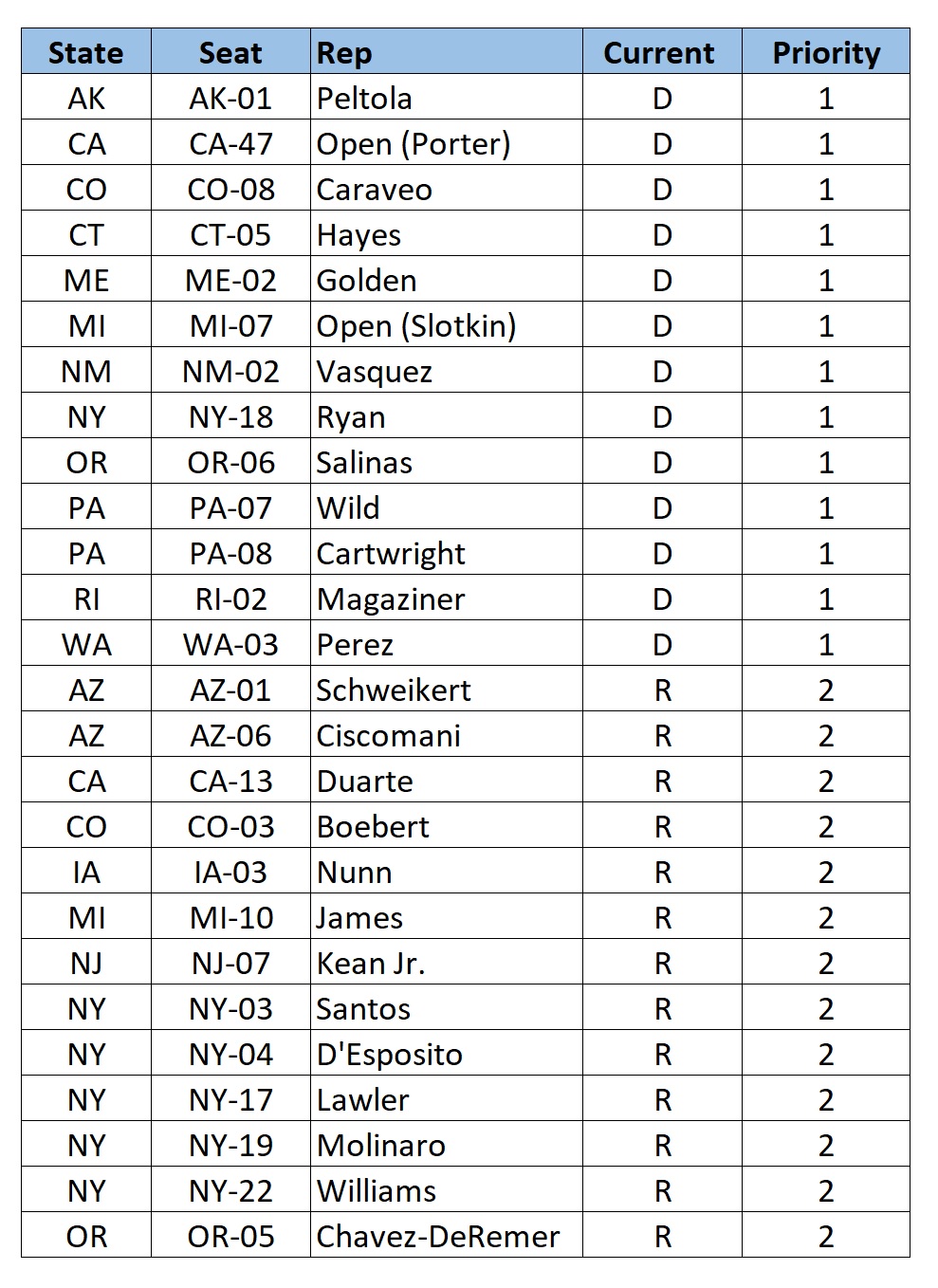Since I already took an early – and rather depressing – look at the 2024 Senate races, I thought I’d next take a swing at the House. The analysis is much tougher on this side of the Hill, but the potential outcome seems a tad brighter for Democrats.
There are 435 voting representatives in the House. By my count, due both to political polarization and partisan gerrymandering, 356 of those seats are currently party locked. Bozo the Clown would win a general election for any of these seats if he had the appropriate (R) or (D) after his name. Hence, the resident circus in Washington, DC. That leaves only 79 seats that “could” be competitive in a given election cycle – which is sadly only about 18% of the House.
The current party split in the House is 222 Republicans and 212 Democrats (with one open seat in a solidly Democratic district). To win control of the House in 2024, Democrats will need to net 5 additional seats. While that outcome is certainly not a slam-dunk, it currently seems quite doable.
Below is an initial summary of my 2024 analysis of the competitive races in the U.S. House. At the moment, the analysis is based on:
- the DCCC’s list of D frontline seats that the party thinks could use the strongest defense (meaning $)
- the DCCC’s list of R target seats (meaning $)
- the NRCC’s list of D target seats (meaning $)
- the number of elections won by the incumbent (or 0 for an open seat)
- the margin of victory of the incumbent in 2022
- weighted third-party analyses
- whether or not the district was a crossover in 2022 (where the district voted for the opposite party in the 2020 presidential election)
- miscellaneous race-specific considerations
In these elections, candidates will matter. Once all of the match-ups are set, the priorities below may well change – particularly where we have decent polling data. If I can easily get my hands on campaign financing data, I’ll also add in that consideration.
Redistricting Notes:
- New York Democrats screwed themselves in 2022, with a favorable redistricting tossed out on procedural grounds. It’s possible that map could be revived in time for the upcoming election – giving NY Democrats better odds all around. However, since the old map still stands for now, that’s what I’m considering.
- The recent (and surprising) 5-4 Supreme Court decision tossing out the racially-biased Alabama district map will force the state to redraw their map in a manner that will likely favor Democrats in two districts instead of one. However, since the districts aren’t yet redrawn, it’s not currently considered. While the SCOTUS decision could also impact maps in LA, AR, FL, GA, SC, NC, & TX, it’s questionable whether any other state maps could be tossed and redrawn in time for the upcoming election. Thus, they are not currently considered.
I’ve assigned five Democratic priority levels to the 79 non-locked races. The most important are the first two, which together include 26 critical races.
- Priority 1: 13 current D seats that need the most protection. This set includes two open seats, seats where the Democrat won by 3% or less, and seats that are vulnerable for some other race-specific reason. 4 of the 13 are crossover seats – in districts that Biden lost in 2020.
- Priority 2: 13 current R seats that are the most likely to flip. This set includes seats where the Democrat lost by 2% or less and seats that are vulnerable for some other race-specific reason. 10 of the 13 are crossover seats – in districts that Biden won in 2020.

Again, Democrats need to net 5 additional seats to take control of the House – and party flips are most likely to occur in the 26 races above. If Democrats lose any Priority 1 seats, they’ll need to make it up in additional Priority 2 seats.
For completeness, my other three priority groups are as follows:
- Priority 3: 17 current D seats that could use some protection. This set can’t be ignored, but they are fairly safe D seats. None of them are crossover seats.
- Priority 4: 8 current R seats that could possibly flip. If the Priority 2 pickups are looking good, this is the next set of targets. 5 of the 8 are crossover seats.
- Priority 5: 28 seats (13 D, 15 R) that are other races to watch, but not obsess over. It’s possible that these seats could flip to the opposing party, but they are likely to remain as they are.
As things progress, I’ll be updating this summary and changing priorities as appropriate. If anyone’s interested, I may also post a deeper dive into the underlying analytics.